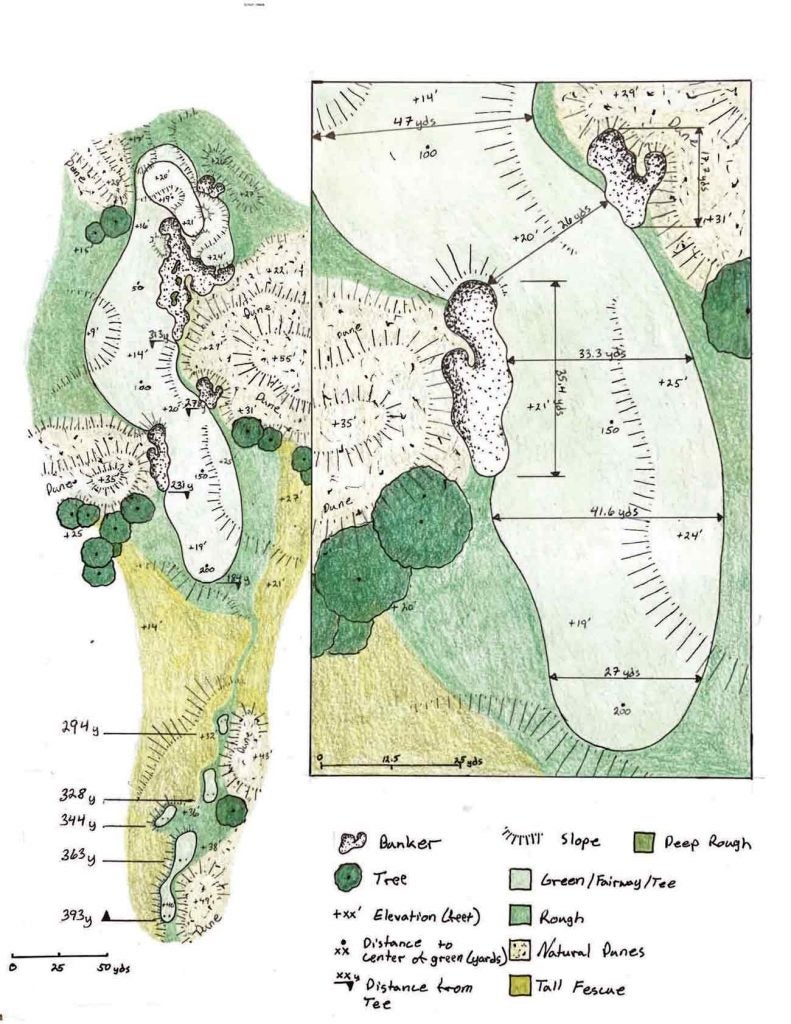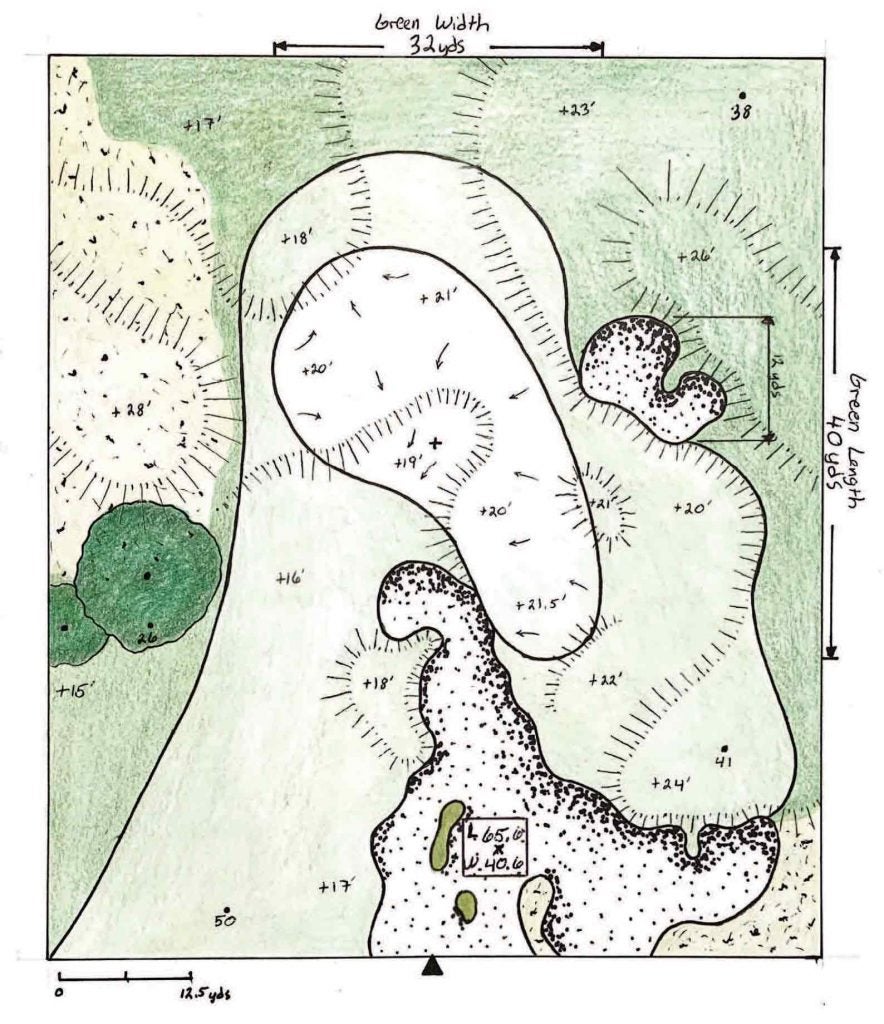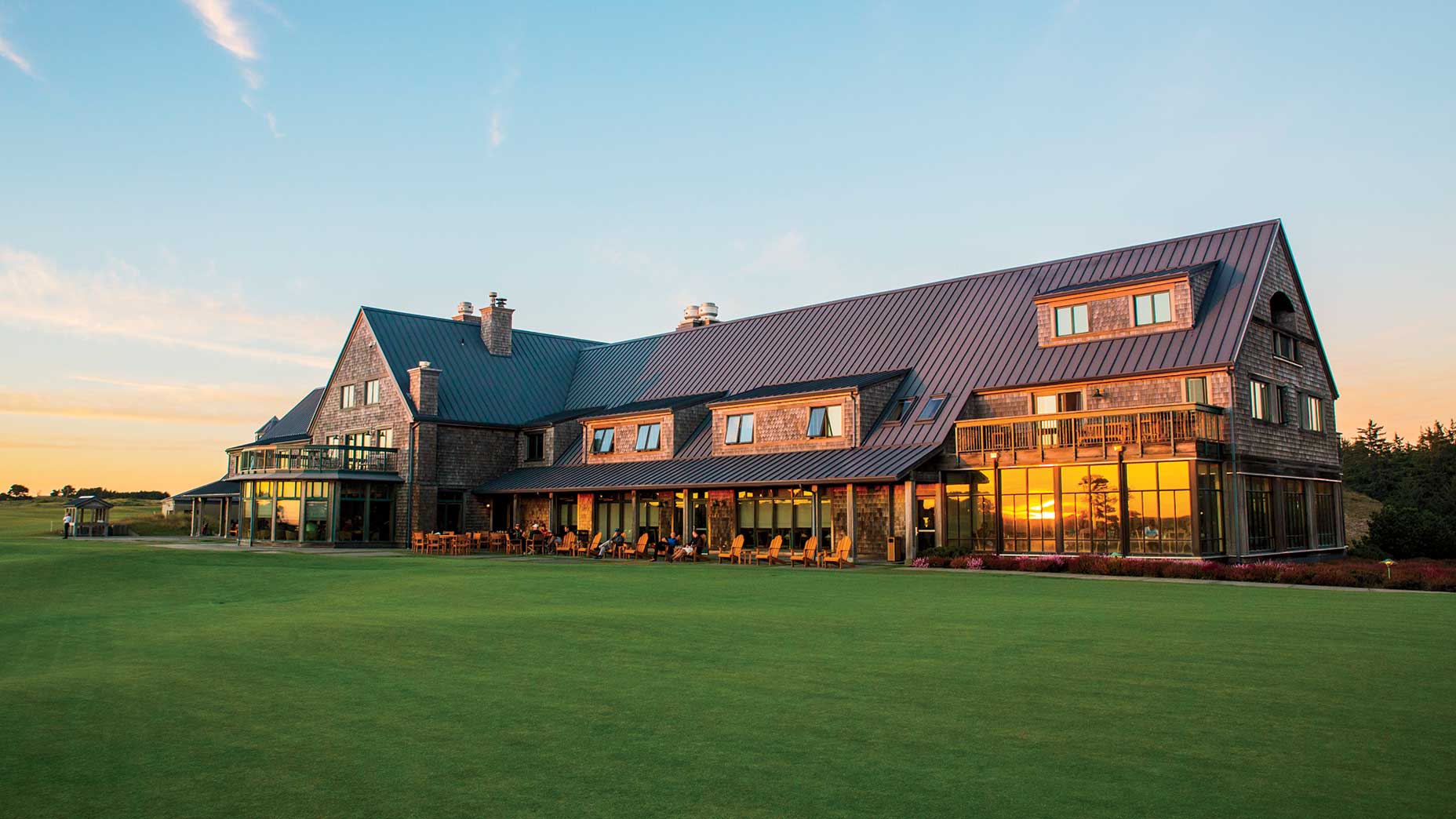 ‘Not an easy decision’: Sweetens Cove, beloved 9-holer, to close for 3 months
‘Not an easy decision’: Sweetens Cove, beloved 9-holer, to close for 3 months
Is this the perfect par 4? A visually daunting hole from the tee, yet still scorable
Ed. note: The inaugural GOLF + Nicklaus Design Challenge, to which contestants submitted plans for their dream par 4s, attracted nearly 200 entrants. From that group, the experts at Nicklaus Design, along with a handful of GOLF editors and writers, nominated 10 finalists — and now we’ve recruited your help in picking the winner. (You can cast your vote here.) To give you more insight into the designers behind the designs and how they conjured their holes, we’re profiling each of them in more detail in the coming days. The winner — which will inspire a hole design on an upcoming Nicklaus Design course — will be announced on or before May 15.
Previous finalist spotlights: Todd Bramwell
DESIGNER: BRYAN ORELLANA
Age: 35
Residence: Fort Wayne, Ind.
Occupation: Senior development engineer for an orthopedic implant company
Handicap: 7.6
Been playing golf for: 25 years
Favorite course you’ve played: Hard to choose just one! Either Pebble Beach or Cape Kidnappers.
Course you’d most like to play that you haven’t: Cypress Point
Ever designed a golf hole before? Yes, I sketch hole designs as a hobby in my spare time.
Time spent on your design? Two to three hours per night for about a week for the final submission. Brainstorming ideas took a little longer as simple sketches to get an idea of how to layout the design.
WE WANT YOUR VOTE! Click here to pick the perfect par 4 from among our 10 finalists.

Please explain your creative process.
I like to use inspiration from other courses around the world and design philosophies from different architects (e.g. Jack Nicklaus, Pete Dye, Alister MacKenzie, Tom Doak, etc.). I usually will start with the green complex, or at least the layout of the green itself. Since I was not utilizing an existing topography, I try to imagine the most intriguing approach to the green complex — both from angle of attack, and from how different contouring can play a role. From there I would have a basic flow of the hole from the back tee, to fairway, to green center. I try to place features that will add challenge (risk/reward) for all skill levels and overall natural aesthetics to the hole. For the more skilled player I tried to set up multiple scenarios that will require players to shape their shots, whereas for the less skilled, the course of play would remain fair yet challenging and enjoyable.
WE WANT YOUR VOTE! Click here to pick the perfect par 4 from among our 10 finalists.
ADVERTISEMENT


The most difficult part of designing a sketch in this manner is visualizing what the final design would look like to the golfer from every angle possible. I tried to design a hole that would allow minimal earth to be moved when being constructed. In this case, the vision for the design utilized natural dunes to define to hole. The layout and slopes take into account drainage as well.
Another characteristic in many of my sketches is optical illusions and visual intimidation. From the elevated tee the player can see all the trouble, even if it doesn’t come into play on the tee shot. Another example is the deep-faced bunker short of the green. From certain approaches it partially obstructs the view of the green. In conjunction with the bunker behind the green, it will appear there is nowhere to land your approach shot. But there is plenty of bailout room if required. If played smart, golfers will be rewarded for good shotmaking. If players miss in the correct locations, they will have the opportunity to get up and down. If played recklessly, or if players do not properly execute the risky approach, they will have a difficult time making a reasonable score.
Click here to see all 10 of our finalists and vote for your favorite design.
To receive GOLF’s all-new newsletters, subscribe for free here.
ADVERTISEMENT






